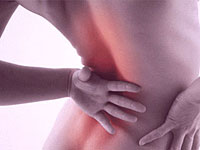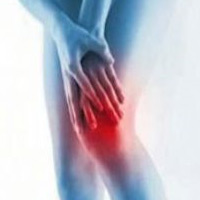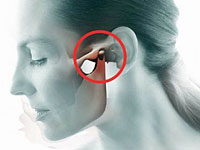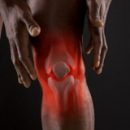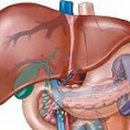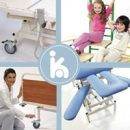Rheumatoid arthritis is an autoimmune disease, which leads to chronic inflammation of the joints, besides, the okolosserts and some other tissues, organs and systems of the body are affected, so rheumatoid arthritis refer to systemic diseases.
Content
Rheumatoid arthritis – chronic disease he has gradually
Progressive current, sometimes intermittent with remissions (periods
temporary improvement).
Inflammation of Sustav
characterized by its swelling, soreness and sometimes appearance
Redness. As already mentioned, with rheumatoid arthritis can
Occupic fabrics – Bundles and muscles.
Chronic
Sustav inflammation leads to the destruction of the articular cartilage and
The emergence of the deformation of the joint, which in turn violates it
Function – Pains occur when driving and refractory.
Rheumatoid
Arthritis is a rather common disease, in Russia they
about 1 million people suffer. Women are sick more often. Disease
can begin at any age, but more often debuts between 40-60 years
Life.
What
causes rheumatoid arthritis?
Etiology (reason) of rheumatoid arthritis unknown. Suspected genetic,
infectious factors, environmental impact and other. For example,
It has been proven that smoking increases the risk of rheumatoid arthritis.
Symptoms of rheumatoid arthritis
Symptoms of rheumatoid arthritis can appear and disappear into
depending on the stage of the disease. Stage of sacrament inflammation (and
Reducing the severity of symptoms and improving the health of patients)
called remission. Remission may occur or under
exposure to treatment and last a few weeks, months or even
years old. When remission stops, the activity of the disease increases, and
The well-being of patients is worse again – This period is called
exacerbation.
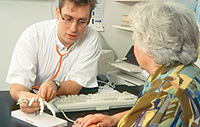
During exacerbation, patients experience
Weakness, loss of appetite, temperature increase, muscle and articular
Pain and stiffness of the joints. Joint joints usually most
expressed in the morning or after rest periods. The defeat of the joints is called
Arthritis. Joints become painful and edema. With rheumatoid
Arthritis is characterized by symmetric damage to the small joints of the brushes and
stop. Less often occurs isolated lesion of large joints on
One side – In these cases, difficulties may arise when
formulation of diagnosis because such a character of arthritis is more common
When gouging or infectious inflammation of the joint. Rare cases are described
Defeat T.N. Crycorate-shaped joints that stretch
vocal cords. These patients develop hoarseness.
How
already said rheumatoid arthritis – systemic disease so
Many authorities may suffer. Inflammation of the gland glasses and mucosa
leads to the appearance of dryness of these organs – SHEGREEN SYNDROM.
Rheumatoid inflammation of the lung shell (pleura) is called pleurisy and
characterized by pain in breast with breathing and cough. Lungs themselves too
may be inflamed, rheumatoid nodules are formed in them.
When inflammation of the heart shell – Pericardia – Patients complain on
Breast pain, which usually decreases when tilting forward and
Strengthens lying on the back. Chronic inflammation with rheumatoid
Arthritis can lead to a decrease in blood hemoglobin – Development
anemia. There may also be a decrease in the number of leukocytes (which leads to
raising the risk of infectious diseases). If you still have and
Increased spleen, such a condition is called Felty syndrome.
Rheumatoid subcutaneous nodules are most often formed on the elbows and near
fingers, but may appear elsewhere. Rheumatoid nodules themselves
in itself do not cause symptoms, but sometimes the secondary
Infectious inflammation. Rare severe rheumatoid complication
Arthritis is vasculitis (inflammation of vessels). Vasculitis violates
blood supply to organs and tissues, most often vasculitis manifests itself
the formation of dark necrotic regions and ulcers on the fingers and on
feet.
How the rheumatoid arthritis is diagnosed?
When the appearance of the above or similar complaints, it is necessary to come to the reception to
Doctor specializing in this disease - to a rheumatologist. Doctor
In detail asks the patient about the complaints, the time of their occurrence,
preceding diseases and t.D., then conducts inspection of the joints,
Skin, other organs and systems. After that, a certain
spectrum of analyzes, including T.N. «Revlmoproby», To confirm the diagnosis
and determining the degree of activity of the disease. In some cases
Radiography and other research methods are carried out.
Laboratory diagnostics with rheumatoid arthritis
In blood, 80% of patients with rheumatoid arthritis detected special
antibodies – rheumatoid factor. Availability / absence of rheumatoid factor
It is important not only for the diagnosis, but also for the forecast of the disease.
Diagnostic instrumental methods for rheumatoid arthritis
X-ray
Picture with rheumatoid arthritis may not show any changes to
Early stage of the disease. When progressing the disease on
radiographs appear typical for rheumatoid arthritis erosion
Joints. Radiography is usually used to observe the course
Diseases.
Puncture (puncture) joints is called
Arthrocents. With the needle and syringe, the rheumatologist pumped up the articular
Liquid, which then steal into the laboratory for analysis. Arthrocents
used for diagnostics (for example, when you need to distinguish
rheumatoid arthritis from other types of arthritis) and for medicinal purposes
(Removing excessive liquid from the joint when inflammation,
Introduction to the joint of anti-inflammatory drugs).
Treatment of rheumatoid arthritis
Fully
cure rheumatoid arthritis impossible. Modern methods of treatment
aimed at reducing inflammation, improve the function of the joints and
Prevent disability of patients. Previously, the beginning of treatment improves
forecast. Optimal treatment includes not only medication
therapy, but also therapeutic physical education, lifestyle change and other
Events.
In the treatment of rheumatoid arthritis
Two types of preparations are used: anti-filling or
Fighting drugs «first line» and slow
Preparates «second line» (they are also called disease-modifying or
Basic preparations). The first group of drugs refer aspirin and
Hormones (corticosteroids) that remove inflammation and reduce pain.
Base preparations (for example, methotrexate) cause remission (relaxing) and
prevent or slow down the destruction of the joints, but are not
Anti-inflammatory drugs.
Surgical treatment is used to correct the pronounced deformations of the joints.



